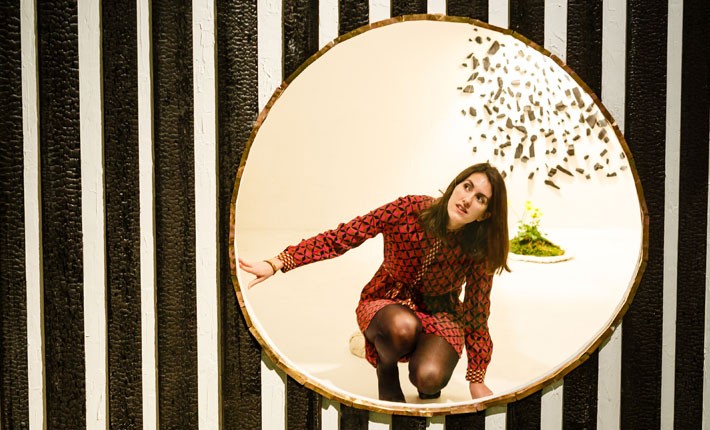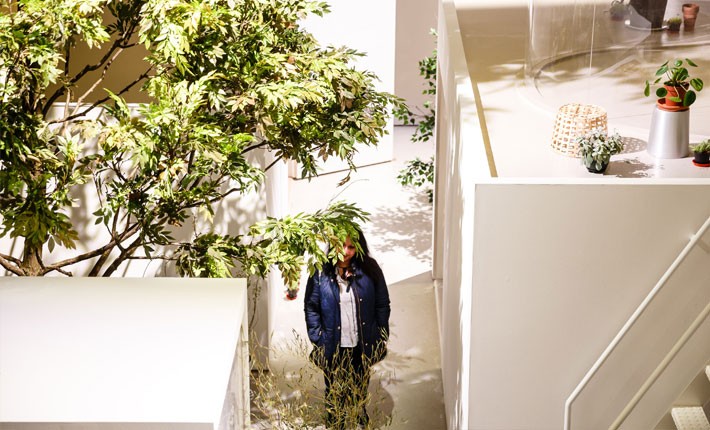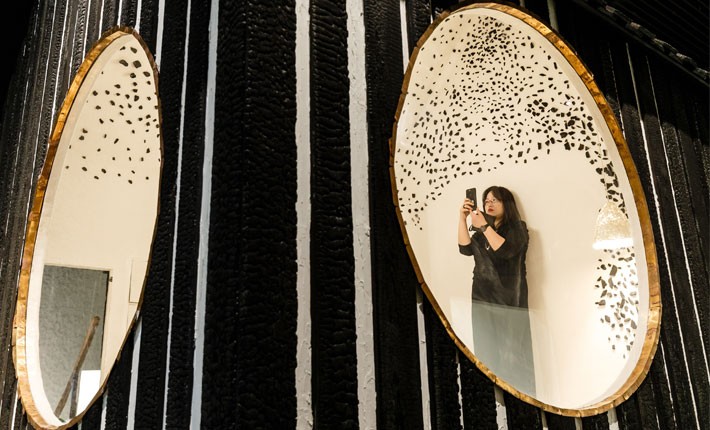The Japanese House: Architecture and Life after 1945
23 Mar - 25 Jun 2017

The Japanese House: Architecture and Life after 1945 Installation View. Photo by Miles Willis / Getty Images

The Japanese House: Architecture and Life after 1945 Installation View. Photo by Miles Willis / Getty Images

The Japanese House: Architecture and Life after 1945 Installation View. Photo by Miles Willis / Getty Images

The Japanese House: Architecture and Life after 1945 Installation View. Photo by Miles Willis / Getty Images
THE JAPANESE HOUSE: ARCHITECTURE AND LIFE AFTER 1945
23 March - 25 June 2017
'...remarkable ambition by the Barbican that pays off in spades’
The Times
★★★★★ ‘A superb show’
Evening Standard
★★★★★ ‘This exhibition is ephemeral; make sure you see it before it’s torn down this summer’ Londonist
★★★★★ The Upcoming
'...in equal measure fascinating and beautiful', 'You can while away many a long hour in here'
★★★★ Time Out
Our homes and personalities are intrinsically linked but nowhere more so than in Japanese architecture, where the needs of a building’s residents inform its very construction. The Japanese House welcomes you inside the Moriyama House (2005), designed in Tokyo by Ryue Nishizawa (SANAA) and inhabited by Yasuo Moriyama, an enigmatic urban hermit.
Lose track of time weaving in and out of the house’s ten individual, fully-furnished rooms and maze-like gardens. Rabbit chairs, sliding libraries and an ‘outdoor’ cinema are just some of the details that make up Moriyama’s unusual domestic environment.
As well as the full-size recreation of the Moriyama House, the exhibition also features a fantastical and lovingly crafted Japanese teahouse and garden designed by Terunobu Fujimori, featuring traditional Japanese tea ceremonies throughout the exhibition run. Come and watch day turn to night in the gallery space as part of this full sensory experience.
The Japanese House is the centrepiece of the UK’s first major exhibition exploring Japanese domestic architecture from the end of the Second World War, a period which has consistently produced some of the most influential and ground-breaking examples of modern and contemporary design.
In the wake of the war, the widespread devastation of Tokyo and other Japanese cities brought an urgent need for new housing, and the single family house became the foremost site for architectural experimentation and debate. Since then, Japanese architects have used their designs to propose radical critiques of society and innovative solutions to changing lifestyles.
The Japanese House: Architecture and Life after 1945 is curated by Florence Ostende (Barbican Centre, London), in collaboration with Pippo Ciorra (MAXXI, National Museum of the 21st Century Arts, Rome). The Chief Advisor is Yoshiharu Tsukamoto (Atelier Bow-Wow/Tokyo Institute of Technology). The Academic Advisor is Hiroyasu Fujioka (Professor Emeritus, Tokyo Institute of Technology). The exhibition designer is Lucy Styles. The Fujimori tea-house is designed by Terunobu Fujimori in collaboration with architect Takeshi Hayatsu and built by students from Kingston University.
The exhibition is co-organised by the Japan Foundation and the Barbican Centre and co-produced by the Japan Foundation, the Barbican Centre, MAXXI National Museum of the 21st Century Arts, Rome and the Museum of Modern Art, Tokyo. The project was initially conceived in Tokyo by Kenjiro Hosaka (MOMAT) and Yoshiharu Tsukamoto.
23 March - 25 June 2017
'...remarkable ambition by the Barbican that pays off in spades’
The Times
★★★★★ ‘A superb show’
Evening Standard
★★★★★ ‘This exhibition is ephemeral; make sure you see it before it’s torn down this summer’ Londonist
★★★★★ The Upcoming
'...in equal measure fascinating and beautiful', 'You can while away many a long hour in here'
★★★★ Time Out
Our homes and personalities are intrinsically linked but nowhere more so than in Japanese architecture, where the needs of a building’s residents inform its very construction. The Japanese House welcomes you inside the Moriyama House (2005), designed in Tokyo by Ryue Nishizawa (SANAA) and inhabited by Yasuo Moriyama, an enigmatic urban hermit.
Lose track of time weaving in and out of the house’s ten individual, fully-furnished rooms and maze-like gardens. Rabbit chairs, sliding libraries and an ‘outdoor’ cinema are just some of the details that make up Moriyama’s unusual domestic environment.
As well as the full-size recreation of the Moriyama House, the exhibition also features a fantastical and lovingly crafted Japanese teahouse and garden designed by Terunobu Fujimori, featuring traditional Japanese tea ceremonies throughout the exhibition run. Come and watch day turn to night in the gallery space as part of this full sensory experience.
The Japanese House is the centrepiece of the UK’s first major exhibition exploring Japanese domestic architecture from the end of the Second World War, a period which has consistently produced some of the most influential and ground-breaking examples of modern and contemporary design.
In the wake of the war, the widespread devastation of Tokyo and other Japanese cities brought an urgent need for new housing, and the single family house became the foremost site for architectural experimentation and debate. Since then, Japanese architects have used their designs to propose radical critiques of society and innovative solutions to changing lifestyles.
The Japanese House: Architecture and Life after 1945 is curated by Florence Ostende (Barbican Centre, London), in collaboration with Pippo Ciorra (MAXXI, National Museum of the 21st Century Arts, Rome). The Chief Advisor is Yoshiharu Tsukamoto (Atelier Bow-Wow/Tokyo Institute of Technology). The Academic Advisor is Hiroyasu Fujioka (Professor Emeritus, Tokyo Institute of Technology). The exhibition designer is Lucy Styles. The Fujimori tea-house is designed by Terunobu Fujimori in collaboration with architect Takeshi Hayatsu and built by students from Kingston University.
The exhibition is co-organised by the Japan Foundation and the Barbican Centre and co-produced by the Japan Foundation, the Barbican Centre, MAXXI National Museum of the 21st Century Arts, Rome and the Museum of Modern Art, Tokyo. The project was initially conceived in Tokyo by Kenjiro Hosaka (MOMAT) and Yoshiharu Tsukamoto.


